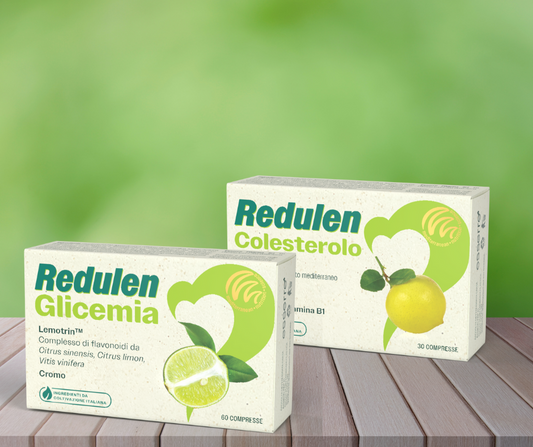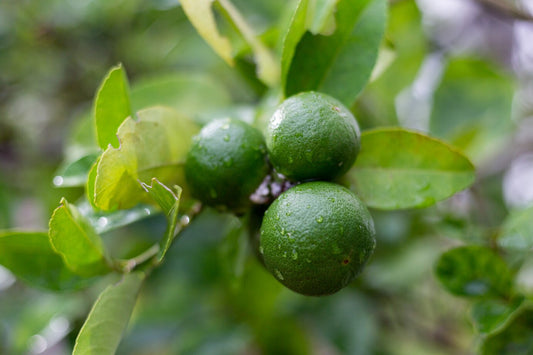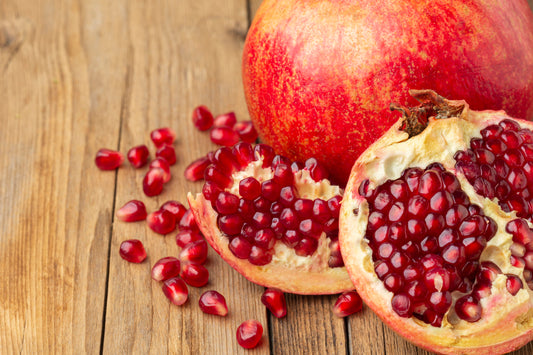The pomegranate plant ( Punica granatum L. ), belonging at the botanical family of L y thraceae , is an archaeophyte species ( exotic or alien species introduced In the territory before the discovery of America , by convention before 1500) , naturalized , non- invasive , original of Asia south -western, but present on the territory Italian and throughout the Mediterranean basin ( Celesti - Grapow et al ., 2009 ) . According to etymology , the name of the genus Punic it would derive from malum punicum , which would mean ' Carthaginian apple ' (according to Pliny, i pomegranates they were growing in the land of Carthage , from which they would have taken the name ), while the name of the species, granatum , would derive from gránum , that is wheat , and it would mean ' which has many grains ' .
The pomegranate is a woody plant with a bushy or arboreal habit that can reach an average height of 2-4 m, up to 6-7 m in certain conditions. It is a long-lived plant that prefers a warm temperate climate and sunny exposure , being particularly resistant to dry soil and drought . It suffers if temperatures fall below -10 ° C . The leaves are deciduous, narrow and oblong (about 2 cm wide and 4-7 cm long), while the flowers are bright red (or other shades of red depending on the cultivar) , about 3 cm in diameter and with 3-4 petals.
The fleshy and indehiscent fruit called pomegranate is a large berry (balausta) of reddish or reddish yellow color and spherical shape (5-12cm x 5-12cm), characterized by a very leathery peel . The fruit has several internal septa , made up of from the membranous and yellowish endocarp (marrow and carpella membrane) , which form lodges inside which are found the seeds (about 7x4 mm), called arils (up to 600 and more per fruit) and enclosed in a translucent colored pulp garnet or ruby red, so as to appear fleshy ( Figure 1 ) .
Figure 1. The pomegranate is a fleshy , indehiscent berry (balausta) . It is made up of a pericarp which is in turn divided into a leathery outer rind (exocarp), a white, spongy intermediate tissue (albedo or mesocarp) and an internal membranous tissue (endocarp) which divides the locules, inside which are the fleshy and translucent seeds (arils) .

The arils are the only edible part of the plant and have a sour taste , while they are sweet and scented in edible fruit cultivars . In fact, there are many varieties of pomegranate , which are distinguished by the color and size of the fruit , as well as the flavor and aroma of the seeds . Likewise, the size and the arboreal shape of the plant are strongly influenced by the genotype of the cutivar in addition to from the soil, climate and agronomic conditions . In Italy , the cultivars Dente di Cavallo, Neirana , Profeta Partanna, Selinunte, Ragana , Racalmuto and Wonderful are widespread .
The fruits of the pomegranate plant are used , in most cases , for fresh consumption , as well as being used for the preparation of syrups, fruit juices, soft drinks , confectionery and pastry products and for the production of food supplements . Pomegranate is a food rich in vitamin C and phenolic compounds with high antioxidant activity . In particular , the fruit contains approximately 50-52% of arils , while the remaining 48-50% is made up of peel, pith and carpel membrane, with each part containing different phytochemical compounds, among which the most representative are anthocyanins ( or anthocyanins ) and ellagitannins ( Mottaghipisheh et al. 2018; Kushwaha et al. 2020 ) .
Anthocyanins are water-soluble pigments present in various plant tissues and organs, to which they give the typical colors characterized by different shades of red and blue . They are particularly abundant in flowers and fruits, where they act as visual signals that attract animals responsible for pollinating flowers and dispersing seeds. From a phytochemical point of view, anthocyanins are polyphenols belonging to to the chemical family of flavonoids , synthesized from the essential aromatic amino acid phenylalanine through the phenylpropanoid biosynthetic pathway , exclusive to the plant world. They are heterosides (or glycosides ) , that is, molecules formed by the union, through a glycosidic bond , between a non-sugar functional group (aglycone) , the flavylium cation , and a reducing sugar ( glycone ) , generally a hexose or a pentose . Aglycones are also called anthocyanidins and are glycosylated mainly at the C3 position . Most of the over 600 anthocyanins identified to date derive from the six most common anthocyanidins : cyanidin, delphinidin, pelargonidin, peonidin , petunidin and malvidin ( Figure 2 ) ( Celli et al., 2019 ) .
Figure 2. Chemical structure , molecular formula and molecular weight (MW) of the main anthocyanidins (anthocyanin aglycones) .

Among the most abundant anthocyanins present In pomegranate there are delphinidin 3,5-diglucoside, cyanidin 3,5-diglucoside , pelargonidin 3,5-diglucoside , delphinidin 3 - glucoside , cyanidin 3 -glucoside and pelargonidin 3 - diglucoside ( Paul et al., 2018 ; Zhao and Yuan, 2021 ). The oral bioavailability of anthocyanins depends, in large part, on microbial metabolism in the colon, with phenolic acids as the main biotransformation products ( Eker et al., 2020; Gui et al., 202 3 ).
Ellagitannins are of oligomeric polyphenols belonging to the family chemistry of hydrolysable tannins . They They are esters derived from units of hexahydroxydiphenic acid or gallic acid , and a monosaccharide , usually glucose . Oral bioavailability of ellagitannins and is very limited, being extensively metabolized by the intestinal microbiota. Their hydrolysis in the digestive tract releases ellagic acid , which is also poorly bioavailable , but, in turn, transformed into urolithins by the intestinal microbiota , which are found in significant concentrations at blood and urinary level ( Figure 3 ) . Urolithins are responsible for many of the biological activities attributed to ellagitannins , with a large interindividual variability as a function of bioconversion from the intestinal microbiota wall ( Banc et al. 2023 ).
Figure 3. Chemical structure, molecular formula and molecular weight (MW) of the most important ellagitannins present in pomegranate ( punicalagin and punicalin ) and their main metabolites ( ellagic acid and urolithin A).

By-products and waste from industrial pomegranate processing , in particular the peels and seeds that remain at the end of the juice extraction process , still represent a source of biologically active phytochemical compounds in which significant amounts of anthocyanins and ellagitannins can still be found . In fact, approximately 30% of all anthocyanins contained in pomegranate are found in the peel ( Omer et al., 2019 ), as well as the content of total flavonoids in the same matrix is more than 10 times higher than in other parts ( Kalaycıoğlu & Erim , 2017 ). The same consideration is valid for ellagitannins , in particular punicalagin and punicalin , found in the peel at significant levels (296 mg / g and 15 mg/g, respectively ) ( Ibrahium , 2010 ). Of interest is also the use of these matrices for animal feed, from an animal welfare perspective. Several studies have, in fact, documented how the integration of the food ration with these by-products or waste has effects on growth and reproduction parameters, as well as on the health status, of some species of zootechnical interest ( Shabtay et al., 2008; Oliveira et al., 2010; Yaseen et al., 2014; Natalello et al., 2019; Abd El- Ghany , 2023 ).
A similar argument can be made by considering some 'parts' of the pomegranate as secondary raw materials. Unlike by-products, which do not undergo any treatment, secondary raw materials are production residues that undergo one or more recovery processes that allow the waste material to acquire suitable characteristics to perform the same function as a virgin raw material within new production processes . This approach allows the application of a circular bioeconomy model to the production of nutraceutical substances in a sustainable manner, since , as is known, any form of waste has a carbon footprint , according to the perspective zero waste stated in the ' Waste Framework Directive' 2008/98/EC, which establishes the cessation of the waste qualification in the legal and commercial fields.
Another important aspect is the extraction processes that determine the yield of active ingredients. These processes, in turn, depend on the starting matrix, its structure, texture, solubility and chemical properties, and on the extraction conditions of temperature , pressure and pH. In general, agro-industrial waste , including pomegranate waste, is rich in cellulose, hemicellulose and lignin, polymers that interfere with the extraction procedures of bioactive compounds and, therefore, require pretreatment with physical, chemical or biological methods. Conventional extraction methods include solid-liquid extraction, distillation, the use of a Soxhlet apparatus and organic solvents, long processes with low yield, in the face of high energy consumption and environmental impact. Furthermore, these methods have low specificity and selectivity , providing an equally low purity of the compounds to be extracted , in addition to the risk of degradation of thermolabile metabolites. Modern 'unconventional' extraction methods allow to overcome the limitations just listed, through the use of ' green ' solvents, such as supercritical fluids and eutectic mixtures, and non-thermal energy sources , such as microwaves , ultrasounds and pulsed electric fields. Furthermore, there are biological extraction processes that use microorganisms or enzymes, particularly effective in the degradation of the cell walls of plant tissues, improving the extraction efficiency of biologically active compounds. ( Arun et al., 2020; Lemes et al., 2022; Pai et al., 2022 ). Comparing different extraction methods ( cold maceration, ultrasonic extraction, Soxhlet apparatus or supercritical fluids ), the highest yield of total polyphenols and, in particular , in ellagic acid from pomegranate peels was obtained in supercritical phase. Furthermore, the extract obtained with supercritical fluids possessed good antimicrobial activity against gram +, gram – bacteria and fungi ( Kupnik et al., 2022 ) . Extraction by pressurized liquids or solvents (a combination of water and ethanol at high temperature and pressure) represents another rapid and low environmental impact methodology (compared to a conventional solid-liquid extraction) successfully used for the recovery of polyphenols from pomegranate peels , with a yield of 164.3 ± 10.7 mg gallic acid equivalents /g and a significant antimicrobial activity of the extract itself ( García et al., 2021 ).
In conclusion, some beneficial effects on health linked to the consumption of pomegranate and often handed down by popular tradition have been demonstrated both by preclinical studies in vitro and in vivo. and clinical studies , both on patients and healthy subjects . In particular, antioxidant, anti-inflammatory, hypoglycemic and hypolipidemic activities have been documented , as well as antitumor, cardioprotective and neuroprotective properties. These studies were carried out using different matrices, mostly pomegranate juice, but also peel extracts, seed powder and seed oil, the latter rich in punicic acid , a polyunsaturated fatty acid with antitumor properties in vitro ( Benedetti et al., 2023 ). In general, the pharmacological activity of pomegranate sensu lato is attributable to the multiplicity of its phytochemical constituents, including non -anthocyanin flavonoids and proanthocyanidins (or condensed tannins) in addition to those previously described. This chemical diversity depends, in turn, on agrobiodiversity , i.e. the genetic diversity within agroecosystems, as well as on the characteristics of the territory, in a sort of terroir in which the interactions between soil, climatic , ecological factors and agronomic (and not only) influence the secondary metabolism of the plant according to the classic genotype x environment model .
Bibliography
Abd El- Ghany , W.A. (2023). A Natural Feed Additive Phytobiotic , Pomegranate (L.), and the Health Status of Poultry. Macedonian Veterinary Review, 46(2), 113-128.
Arun, K. B., Madhavan, A., Sindhu, R., Binod, P., Pandey, A., Reshmy , R., & Sirohi , R. (2020). Remodeling agro-industrial and food wastes into value-added bioactives and biopolymers. Industrial Crops and Products, 154, 112621
Banc, R.; Rusu, M.E.; Filip, L.; Popa, D.-S. The Impact of Ellagitannins and Their Metabolites through Gut Microbiome on the Gut Health and Brain Wellness within the Gut–Brain Axis. Foods 2023, 12, 270.
Benedetti, G., Zabini , F., Tagliavento, L., Meneguzzo, F., Calderone, V., & Testai, L. (2023). An Overview of the Health Benefits, Extraction Methods and Improving the Properties of Pomegranate. Antioxidants, 12(7), 1351.
Celesti‐Grapow et al. (2009). Inventory of the non-native flora of Italy. Plant Biosystems, 143(2), 386–430.
Celli, G. B., Tan, C., & Selig, M. J. (2019). Anthocyanidins and anthocyanins. Encyclopedia of Food Chemistry; Elsevier: Amsterdam, The Netherlands, 218-223.
Eker, M.E.; Aaby, K.; Budic -Leto, I.; Rimac Brnčić, S.; El, S.N.; Karakaya, S.; Simsek, S.; Manach , C.; Wiczkowski , W.; de Pascual-Teresa, S. A Review of Factors Affecting Anthocyanin Bioavailability: Possible Implications for the Inter-Individual Variability. Foods 2020, 9, 2.
García, P., Fredes, C., Cea , I., Lozano-S á nchez, J., Javier, F., Robert, P., … Jimenez, P. (2021). Recovery of Bioactive Compounds from Pomegranate ( Punica granatum L.) Peel Using Pressurized Liquid Extraction. Foods, 203(10), 1–17.
Gui H, Sun L, Liu R, Si X, Li D, Wang Y, Shu C, Sun Crit Rev Food Sci Nutr . 2023;63(22):5953-5966.
Ibrahium , M. I. (2010). Efficiency of pomegranate peel extract as antimicrobial, antioxidant and protective agents. World Journal of Agricultural Sciences, 6(4), 338–344.
Kalaycıoğlu , Z., & Erim, F. B. (2017). Total phenolic contents, antioxidant activities, and bioactive ingredients of juices from pomegranate cultivars worldwide. Food Chemistry, 221, 496–507 .


